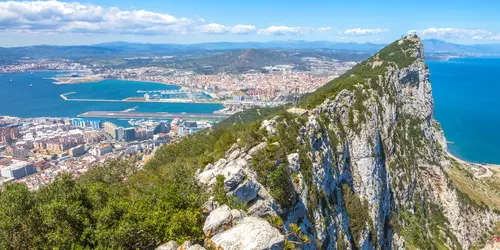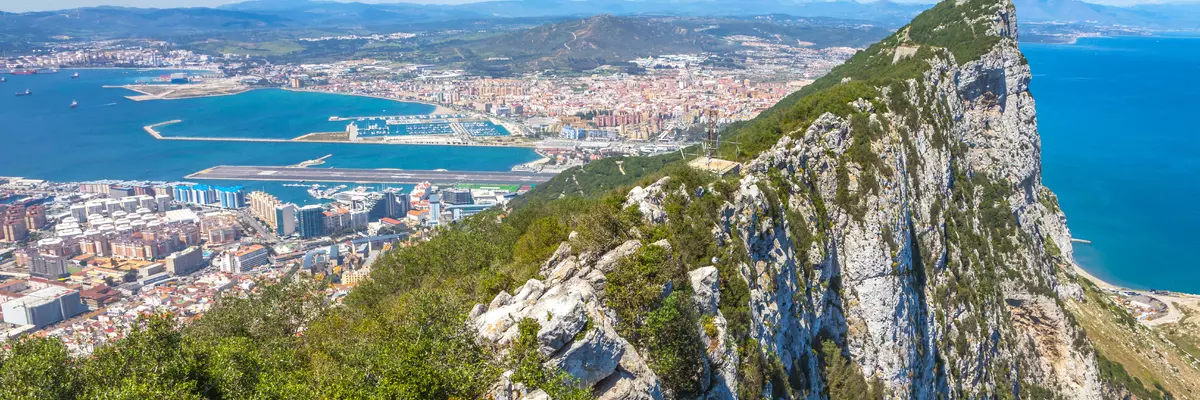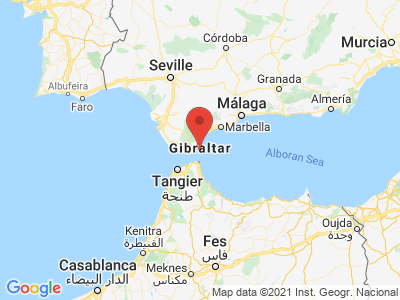Climate Table Gibraltar
Jan | Feb | Mar | Apr | May | Jun | Jul | Aug | Sep | Oct | Nov | Dec | |
|---|---|---|---|---|---|---|---|---|---|---|---|---|
| Max. Temperature | 16° | 17° | 18° | 20° | 23° | 25° | 28° | 29° | 26° | 23° | 19° | 17° |
| Min. Temperature | 10° | 11° | 12° | 13° | 15° | 18° | 20° | 21° | 19° | 17° | 14° | 11° |
| Sun Hours | 5 | 5 | 7 | 8 | 9 | 11 | 11 | 10 | 8 | 6 | 4 | 4 |
| Water Temperature | 15° | 15° | 15° | 15° | 17° | 18° | 20° | 21° | 20° | 19° | 17° | 16° |
| Rain Days | 8 | 8 | 7 | 7 | 3 | 2 | 0 | 0 | 2 | 5 | 7 | 9 |
The climate year of Gibraltar
The British overseas territory of Gibraltar is located on a peninsula adjacent to Spain. To the east, it is bounded by the Bay of Algeciras. To the south is the Strait of Gibraltar. The strait forms the border between Europe and Africa. Gibraltar is only about 6.5 square kilometers in size. The border with Spain is only 1.2 kilometers. The British exclave is characterized by a flat, predominantly sandy terrain and the striking Rock of Gibraltar. The latter is 426 meters high and rises spectacularly steeply from the sea on the eastern side. The climate in Gibraltar is determined by the strait: it acts like a nozzle that amplifies the prevailing winds there, the Levante and the Poniente - that is, the east wind and the west wind. Due to its proximity to Africa, Gibraltar has hot, dry summers and mild winters.
General information about Gibraltar
Those taking the overland route from Spain to Gibraltar must cross the airport runway via a four-lane road - a curiosity that is unique in the world. Although the city itself does not have many sights to offer, most visitors are fascinated by the typically British pubs serving English specialties such as "fish and chips". Bargain hunters will find the stores with duty-free tobacco products and spirits interesting. The tourist magnet par excellence, however, is the Rock of Gibraltar, the "Upper Rock". It can be reached by a cable car or by one of the footpaths. Once at the top, there is a breathtaking view of the city, the Strait of Gibraltar and the African coast. The Upper Rock is mostly a nature reserve and also the only place in Europe where monkeys live in freedom. The approximately 250 Barbary macaques are popular photo motifs.
Tourism Gibraltar
Due to its consistently mild climate, Gibraltar is an attractive tourist destination all year round. The winds determine the climate in the British overseas territory. The Levante, blowing from the eastern Mediterranean, usually dominates in summer. The Poniente comes from the Atlantic and tends to occur in autumn or winter. This rule of thumb does not always apply, however, because the winds can change from one day to the next, depending on the weather. In Gibraltar, even in the winter months of December, January and February, temperatures are in the double digits, with January even being the warmest winter month. If you want to turn your back on the cold Central European winter, you will find the best conditions in Gibraltar. Spring arrives in Gibraltar in March at the latest, bringing pleasantly mild temperatures to the peninsula. This month as well as April are ideal for sightseeing and shopping tours. From May it becomes summery hot. Until October, consistently high temperatures are the rule, while precipitation is the exception. Bathing vacationers, but also sailors and surfers, who appreciate constant wind conditions, find optimal conditions in this season. Most of the rainy days in Gibraltar occur between November and March - although the number of rainy days is kept within reasonable limits with an average of seven to nine days per month. The water temperature, however, hardly falls below 15 degrees throughout the year.


